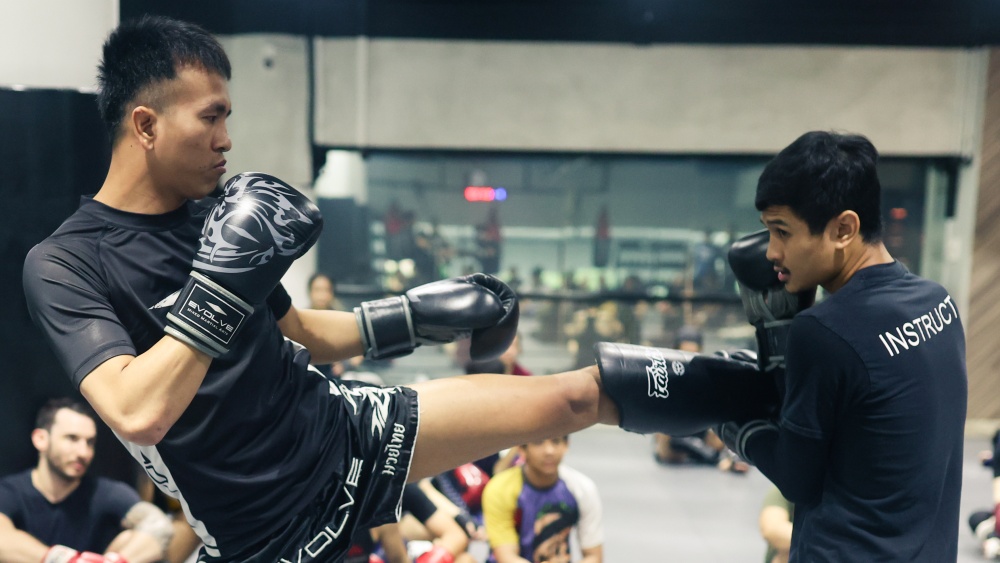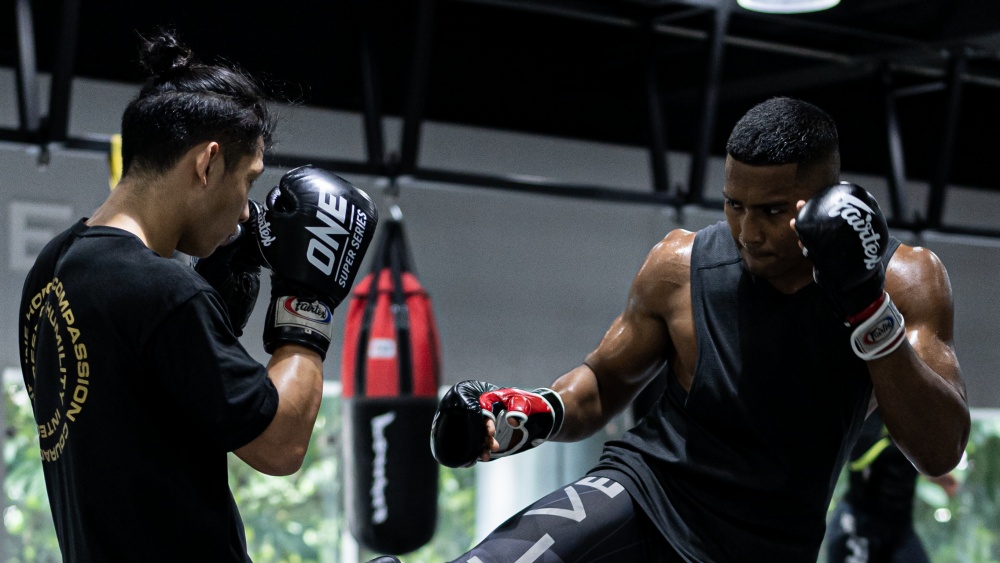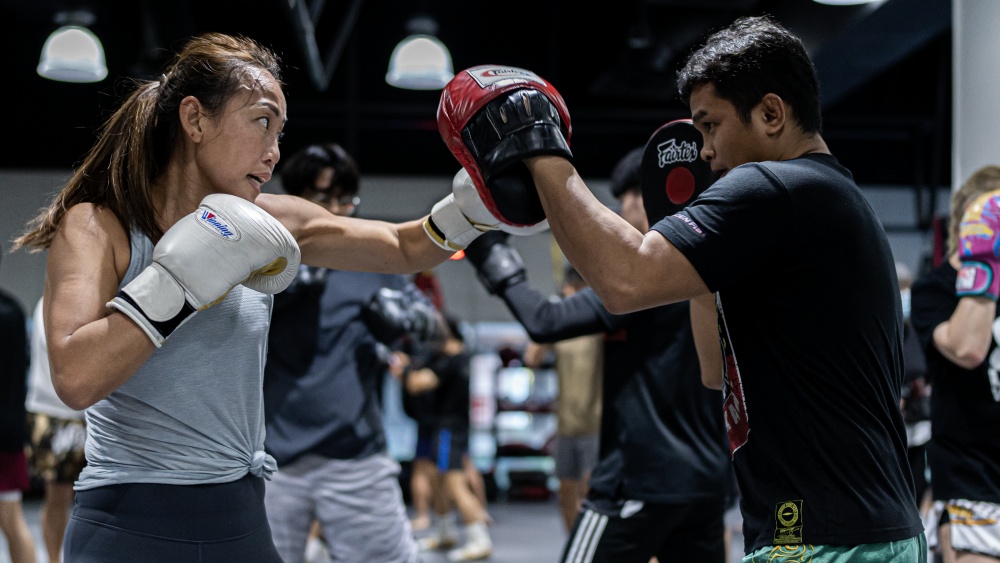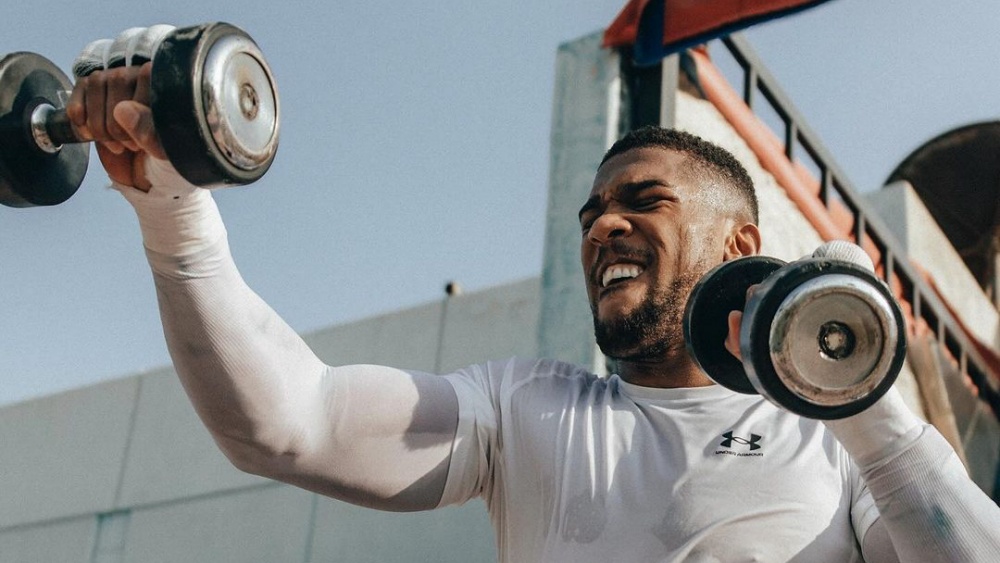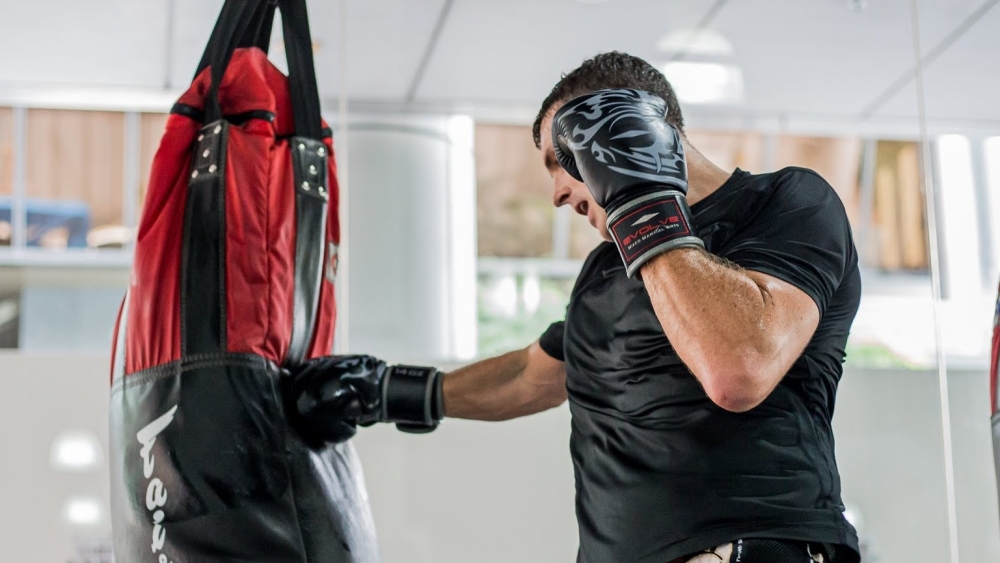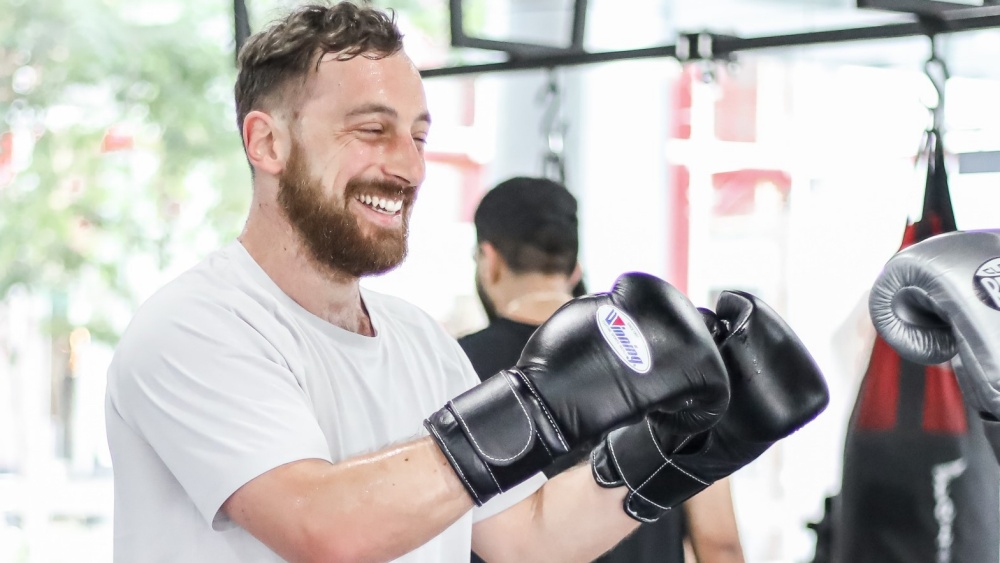You’ll need to find ways to sharpen your reflexes to be a good boxer or Muay Thai fighter. The ability to react quickly to things is essential for all combat sports athletes, particularly those who participate in striking-based martial arts.
Fast reflexes are generally important in all sports, but other sports don’t punish you for having slow reflexes the way boxing, Muay Thai, or mixed martial arts do. A split second can be the difference between victory and defeat inside the ring. Fortunately, there are ways to go about sharpening your reflexes. Some of these methods focus on training your mind, while others focus on your body.
Before going further, let’s define what a reflex is so you don’t confuse it with reaction time. A reflex is defined as an action performed in response to a stimulus without any conscious thought. For fighters, it means the habits you’ve cultivated through your training and turned into part of your muscle memory. It’s an automatic response you get from training like slipping a straight punch.
The Importance Of Quick Reflexes For Muay Thai Fighters And Boxers
Combat sports like boxing, MMA, and Muay Thai might seem like displays of brute strength from the outside looking in, but they are cerebral sports. Your brain needs to be able to process information quickly and figure out the correct response for any action your opponent takes.
Fighting is more about how fighters react to each other in the heat of battle than dominating opponents with brute strength. You must react correctly to every step, punch, and movement your opponent makes to give yourself the upper hand. That’s why many experienced boxers and Muay Thai fighters will tell you it’s more of a battle of reflexes than strength inside the ring.
Combat sports are fast-paced activities that can also be unpredictable, so your reflexes need to be sharp to keep up with all the things going on around you.
You only get a split second to make decisions based on small pieces of stimuli you receive from your opponents during fights like an incoming straight punch. Your reflexes are what allow you to see the incoming strike in time, slip, and fire off a counter. Most fighters aren’t consciously thinking about doing these things during their fights, it’s something their brain does automatically based on the stimuli it perceives.
Improving your reflexes is a lot more than learning how to react quickly. It’s also about improving your body and mind connection so they work harmoniously together as you react to your opponents. Training your reflexes also means training yourself out of some of the natural reflexes humans have.
For example, it’s perfectly normal to blink your eyes when something is thrown at your face. It’s an excellent reflex that helps protect your eyes against foreign objects. However, this natural response doesn’t do you any favors inside boxing or Muay Thai rings. Blinking your eyes when punches are thrown at you means you don’t see what your opponent is doing once your eyelids are shut. That split second of blinking might prevent you from seeing a follow-up shot that ends up knocking you out.
Ten Tips And Drills To Improve Your Reflexes For Boxing, Muay Thai, And MMA
Ready to learn some effective ways to sharpen your reflexes for MMA, Muay Thai, and Boxing? Let’s take a look at some of the things you can do.
1) Train Your Mind To Stay Calm During Fights
One of the first obstacles novice fighters face is learning to keep their minds clear during their fights. Remember, a reflex is an action you take as a response to something without any conscious thought. Many beginners tend to overthink things during their first few sparring matches or fights, constantly worrying about what they should do next.
Unfortunately for them, all that worrying only slows down their reflexes, instead of improving them. Your mind needs to be clear for your brain to organically react to things you’re experiencing, so focus on keeping your mind clear and going with the flow during your sparring matches and fights.
Training yourself to “turn off your brain” during a match is a lot easier said and done. It’s not something you can do simply because you want to; it’s something that comes with years of training and making your defensive and counter-striking technique part of your muscle memory.
You’ll have difficulty keeping your head clear during fights if you’re constantly worrying about throwing techniques with proper form. Your techniques should be muscle memory by the time you get inside the ring so you can react to things impulsively instead of thinking about what to do. Pure reflex beats analytical thinking once the opening bell of a fight has been rung. Analytical thinking has its place in combat sports, like during fight preparation and post-fight, but not inside the ring.
Some of the other things you can do to clear your mind during fights include learning how to drown out distractions like hecklers and focusing on your breathing.
2) Use Reaction Combination Training Drills
Reaction combination training should be a significant part of any boxer’s training routine. Speeding up your reflexes is only half of the equation when it comes to how you react to your opponent’s attacks in combat sports; you also need to improve how you react.
Reflexes are involuntary actions, but you can train your brain to react to things how you want it to. Pads and focus mitts are extremely effective tools for improving your reaction. The experience level of the person holding the pads is a huge factor since they control the stimuli you get.
A good trainer doesn’t just hold pads in front of you, while you fire off combinations. They move around and throw strikes at you so you can build proper reactions to the threats. For example, a trainer might throw a hook with focus mitts while you duck under and fire off two hooks to the body. Perform such drills often enough and your brain will automatically choose this reaction when you find yourself in a similar situation inside the ring.
Performing drills with complex combos that involve having to use defensive movements is an effective way to stimulate different types of attacks you might encounter inside the ring. This helps to develop the reflex to execute counterattacks after defensive movements.
3) Slow Sparring
Slow sparring shouldn’t be confused with light sparring. Slow sparring is when you and your sparring partners perform techniques in slow motion. You might feel a bit ridiculous when you first give it a try, but it does wonders for your reflexes.
Slowing down the pace of your strikes allows you to feel things out and take everything going on around you in. This occurs at such a fast pace in real fights, it’s impossible to analyze everything your opponent is doing. When you slow things down, little details like the power build-up that telegraphs a cross become more noticeable. Once your brain learns to pick up these signals, even at an ultra-slow speed, you’ll be able to notice and respond to them during fast-paced fights.
4) Reaction Ball Training
A reaction ball is a big rubber ball that comes with six round knobs. These knobs make it impossible to predict how the ball will bounce off the ground or a wall. This makes reaction balls excellent tools for improving your reflexes for Muay Thai or boxing.
One of the simplest drills you can perform with a reaction ball is simply dropping it to the ground and trying to catch it in the air as it ricochets off. You can make the exercise more challenging by trying to catch the ball with only one hand or increasing the drop height.
Move on to wall throws once dropping and catching the ball becomes easy for you. Throw the ball at a wall and try to catch it as it bounces off before it touches the ground.
5) Shadowboxing Sparring
Shadowboxing sparring shares some similarities with slow sparring, with the main difference being that you get to see your opponent’s movements in real-time. Conventional shadowboxing involves throwing strikes against an imaginary opponent, while shadowboxing sparring involves two people.
The difference between conventional sparring and shadowboxing sparring is that you never make contact with your training partner. You stand facing each other, throwing strikes at full speed without being close enough to hit each other. It’s an excellent way to train your reaction time and prepare for competitions.
A double-end bag is another useful tool for improving your reflexes, coordination, and timing. It is a small circular punching bag that is attached to the floor and ceiling with elastic cords. This allows the ball to move unpredictably when hit. It stimulates movements a real opponent would use like bobbing and weaving.
There are some limitations to double-ended bags since they don’t move around the ring like a real opponent would, but it gives you a moving target that reaches you to stay responsive and focused inside the ring.
7) Sparring
Sparring and competitive fights are the most effective ways to improve your awareness. Novice Muay Thai fighters and boxers often struggle with their first sparring session, and it typically isn’t because of their limited techniques.
Beginner fighters often find themselves playing strictly defense when they first step inside the ring, and that’s a good thing. They often forget all the offensive techniques they’ve learned and shell up to minimize the punishment they take. The key is to turn this natural defensive behavior into fighting defensive movements and counterattacks.
Fighting is about learning to read opponents like a book and that only comes with experience inside the ring. Waiting for a signal that a punch is being thrown is often too late. You want to already be in a position to defend and counter due to being able to anticipate your opponent’s next move.
Increasing your awareness by sparring allows you to notice the tiny signals that allow you to predict your opponent’s next move. The better your awareness, the more likely you notice your opponent rotating their body for a power shot or pulling back their arm for a jab. Pair your high awareness with quick reflexes and fast reaction times and you’ll be a handful for anyone you face.
8) Elastic Head Ball
An elastic head ball is a simple training tool that improves your punch accuracy, speed, and reflexes. You can make one for yourself by attaching one end of a meter-long elastic string to a soft bouncy ball like a tennis ball, and the other to a headband or baseball cap.
To perform drills with the ball, you simply get into your fighting stance and throw punches at the ball. The goal is to hit the ball on its way back toward your face or, at the very least, block or slip it. Start slow and slowly build your speed up.
9) Hand-Eye Coordination Drills
There are countless hand-and-eye coordination drills boxers and Muay Thai fighters use to improve their reflexes. One of the simplest hand-eye coordination drills for fighters involves getting into your fighting stance and throwing a ball at a wall, then catching it with your other hand as it bounces back. Another simple drill is to get into your fighting stance facing a wall while a partner throws tennis balls at the wall from behind you and you catch it with one hand and keep alternating.
10) Foam Sticks
Many boxing and Muay Thai instructors use foam sticks as an alternative to pads. The foam sticks are lighter, faster than pads, and cover longer distances. This helps to improve your peripheral vision and reflexes as attacks come from all angles when training.
You slip, duck, lean back, and block attacks while throwing combinations like you would when working with pads. The key to getting the most out of foam stick drills is to face the person holding the sticks the entire time, so you’re forced to use your peripheral vision to avoid attacks.
You may also like:
12 Effective Muay Thai Warm-Up Exercises And Stretches To Do Before Training
Boxing Fundamentals: Understanding The Boxing Punch Number System
